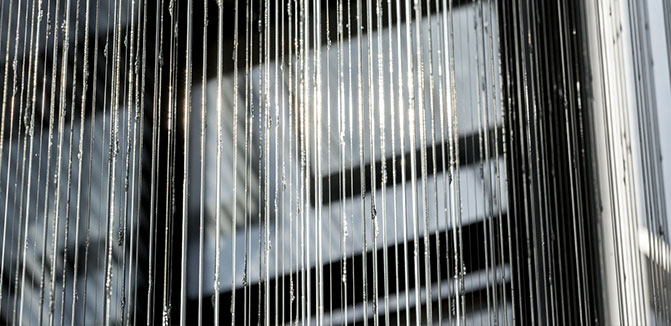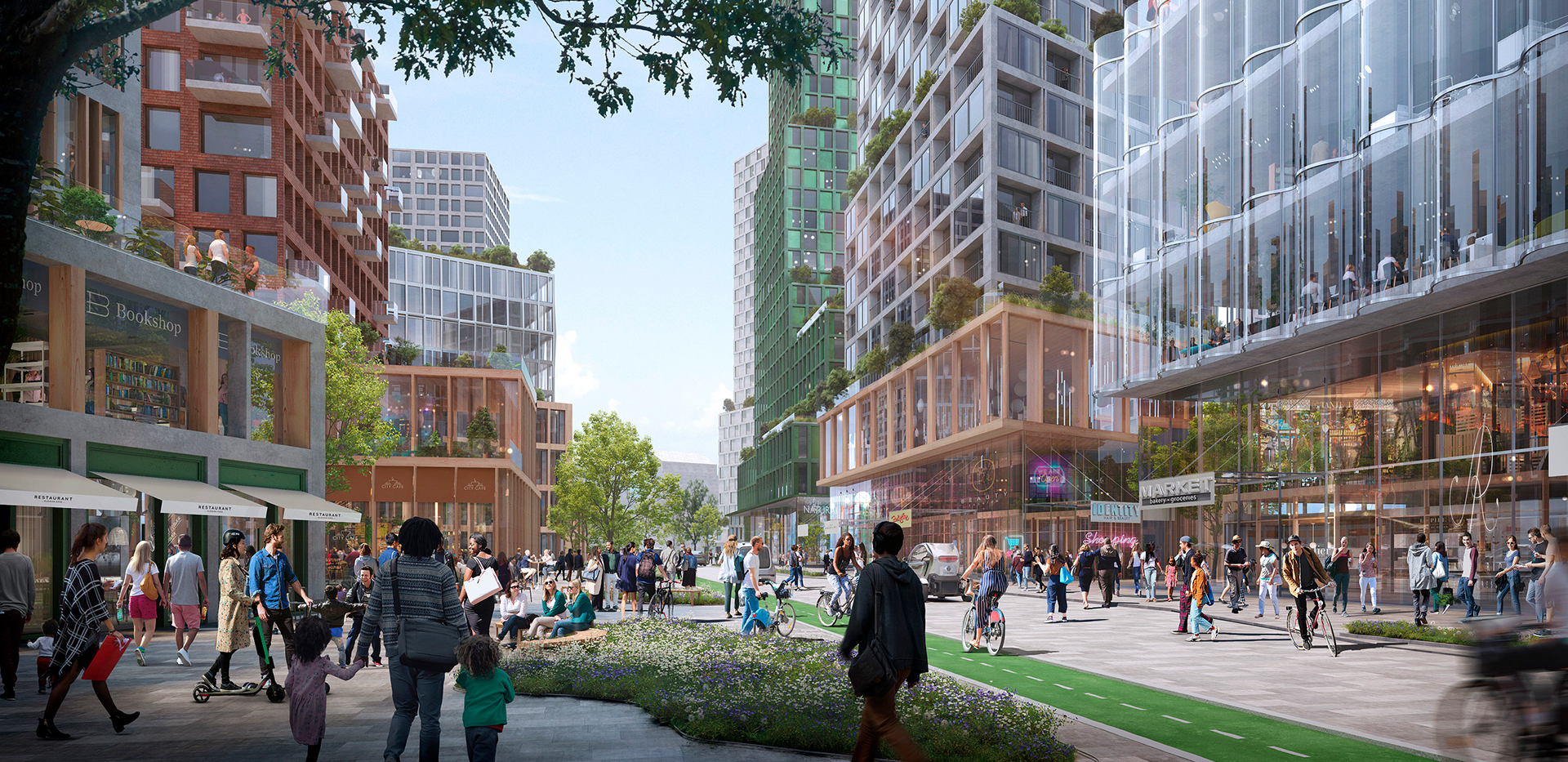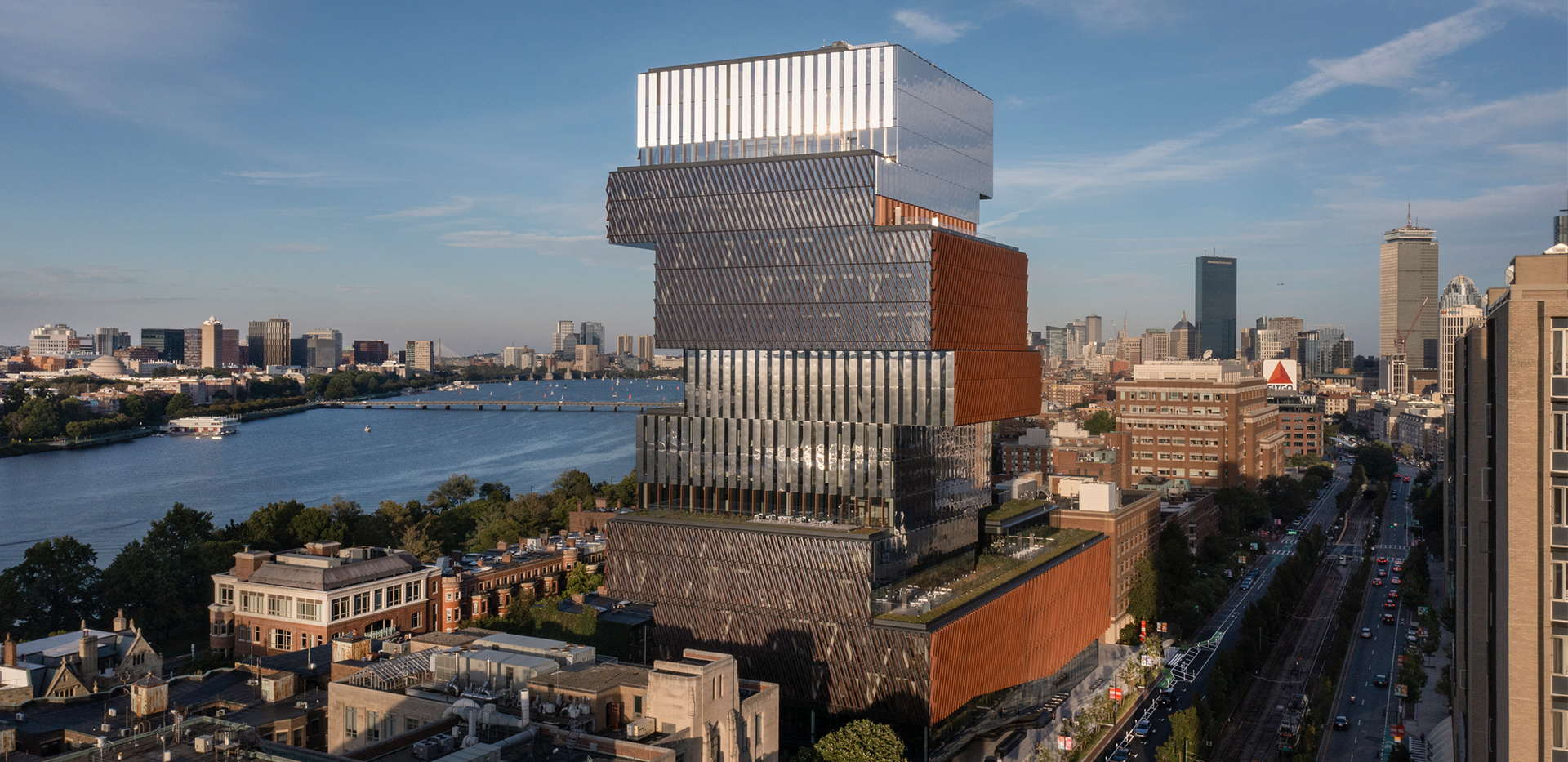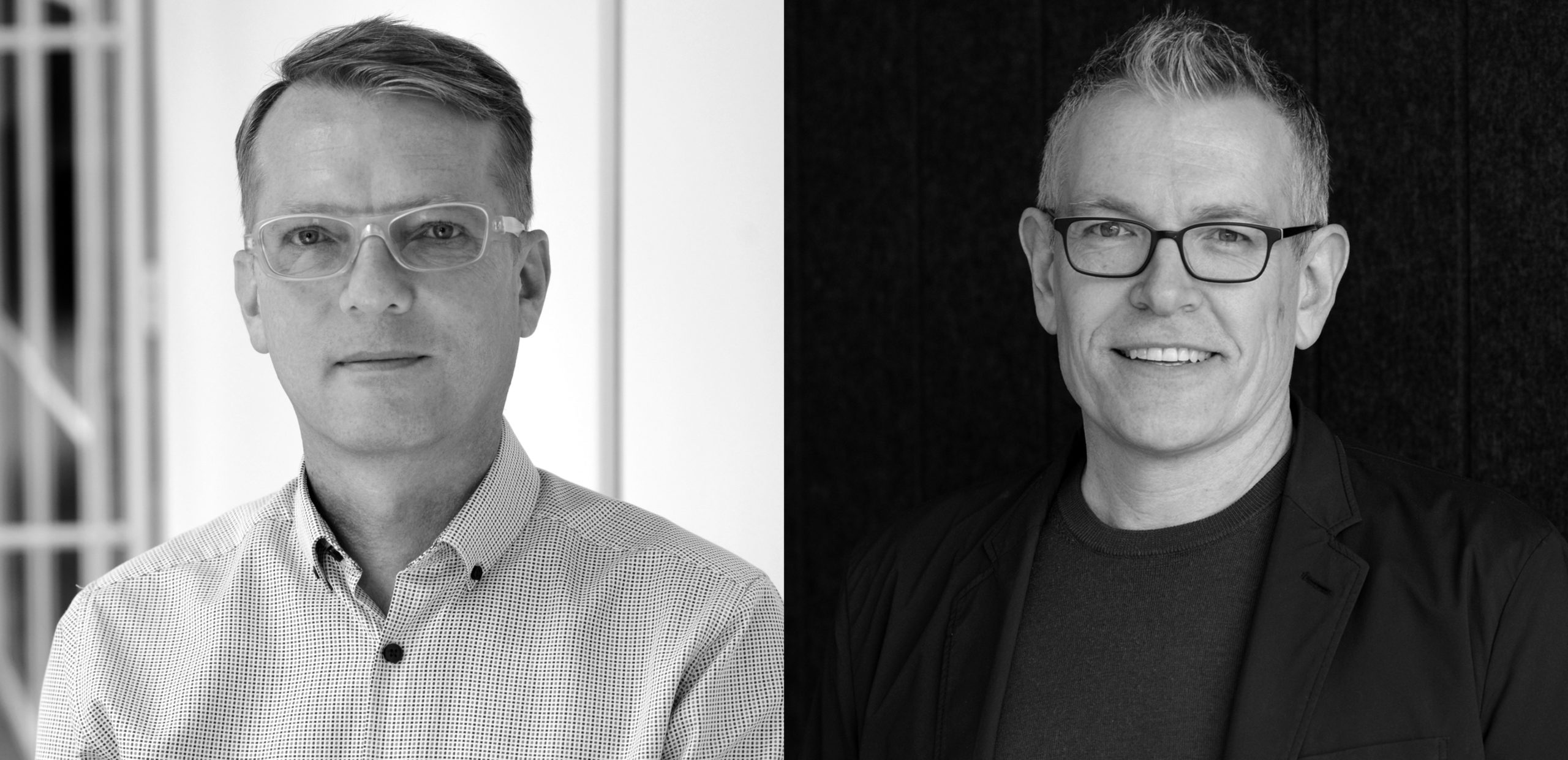Forbes looks at how the Manitoba Hydro Place indoor waterfalls humidify and dehumidify incoming air

Article content
by Natalie Parletta
With temperatures soaring around the globe, people who live in urban jungles – thick with concrete rather than trees – are feeling the heat even more. Climate Central warns that the compounded impact of climate change on cities is set to seriously jeopardise people’s health and put pressure on energy resources and productivity.
With 80% of Americans living in cities, real estate developers have risen to the challenge of addressing the problem with sustainable alternatives to conventional air-conditioning.
Miami, Florida, features a striking example: the Climate Ribbon at Brickell City Centre is a complex $30 million outdoor canopy that channels wind to cool the air while sheltering pedestrians from direct sunlight. Hailed as the world’s biggest horizontal sculpture, the canopy spans an area equivalent to six hockey rinks. This ecological work of art was designed by architect Hugh Dutton to counteract Miami’s high temperatures and subtropical humidity without air-conditioning, while at the same time collecting rainwater.
“We wanted to embrace what Miami is all about, which is being outdoors, but were conscious that the weather occasionally limits retail activities,” explains Kieran Bowers, president of Swire Properties. “The Climate Ribbon reflects solar gain, cools the centre by channelling breeze from Biscayne Bay, collects rain water and serves as a unitizing architectural feature for the centre – it’s art and sustainability in perfect harmony.”
Another natural heat-reducing initiative can be found screening the Ritz-Carlton residences at Miami Beach. With the help of a world-renowned Italian architect, louvres have been designed to let air and light in while keeping sunlight and moisture down, creating a natural cooling effect.
“Piero Lissoni’s vision for this project is to utilize the unreplicable Miami light with these louvers, highlighting the essence of the Miami lifestyle,” says Allison Greenfield, partner of Lionheart Capital.
A hop, skip and a jump away in South Florida, Crystal Lagoons has created a natural, eco-friendly lagoon at Solé Mia that people can splash around in during hot summers. The seven-acre lagoon reportedly uses 50 percent less water than that needed by a park of the same size, 100 times less chemicals than swimming pools and 50 times less energy than conventional filtration systems.
It is the first man-made swimmable lagoon in South Florida, according to Richard LeFrak, Chairman and CEO of LeFrak, with exclusive access to residents at the Shoreline.
People who don’t want to get wet will be able to take refuge at Rosemary Square in West Palm beach where temperatures can otherwise reach 91 degrees. Related Company will use trees to provide natural outdoor air-conditioning. Colorful Bougainvillea, Hibiscus, Chalice Vines and Calamondins offer canopies that will enable people to enjoy the public square and its many murals and artwork during summer. Light materials will replace dark paving to reflect sunlight and water fountains will offer bottle refills for hot and thirsty people.
Further afield in the mother of all cities, Corte condominium has also called on nature to create a landscaped meditation garden among with native flowers, green shrubbery and a large old tree to offer a cool, shady area to help residents escape the “urban heat island effect” of New York.
“Outdoor space was a major design factor at Corte, which means ‘cut’ or ‘break’ in Argentinian culture, because we wanted to create spaces where residents could take a break from the often hectic New York City lifestyle, with shaded areas to reflect and meditate,” says CEO and founder of Modern Spaces, Eric Benaim.
At 277 Fifth Avenue, open-air loggias are chiseled out of the towering building’s corners to offer natural, cool open-air entertaining areas high above NYC. When air currents flowing from areas of high to low atmospheric pressure between the surrounding tall buildings come close together, the rapid pressure change creates strong, cooling winds that are harnessed by the loggias.
Another clever building innovation can be found in Manitoba, with KPMB Architects’ Hydro Place featuring 78-foot indoor waterfalls that humidify and dehumidify incoming air. They cool the building in warmer seasons and reduce energy consumption by 77%. The waterfalls are designed with strands of mylar held at the bottom by bronze weights, and small valves at the top of each strand control the water flow, which looks like droplets to the naked eye.
Bruce Kuwabara, Partner of KPMB Architects, says the humidification and dehumidification system created by the water features provides the building with 100% fresh air 24/seven, year-round.
In winter, he explains, “extreme cold air is pre-heated by fan coil units, and the dry winter air is humidified by the water before it is drawn into the raised floors of the office space. In the summer, the water on the stainless-steel cables is chilled, de-humidifying the incoming air on contact.”
Travelling to the opposite coast of the U.S., luxury builder Troon Pacific uses biophilic design in its San Franciscan homes. The buildings include generous insulation and materials with high solar reflectivity. Skylights are strategically designed to create a chimney effect, allowing hot air to escape and cool air to circulate. Overhangs provide shade, and special glass on south-facing windows minimizes heat on sunny days. These building innovations are complemented by ample trees with large canopies to help ward off the hot sun.
Such innovations should herald a new era that leaves heat-absorbing roofs, treeless streets and poor insulation for dead. They also show that natural cooling alternatives are only as limited as people’s imaginations and could help inspire other developers – large and small – around the globe to fight urban heat sustainably.
Related News
Downsview Framework Plan wins National Urban Design Award
April 17, 2024
)
)
)